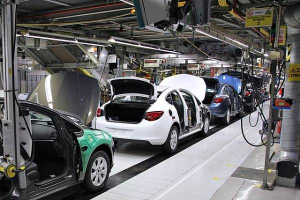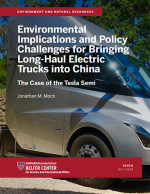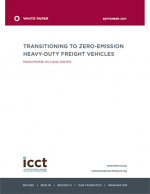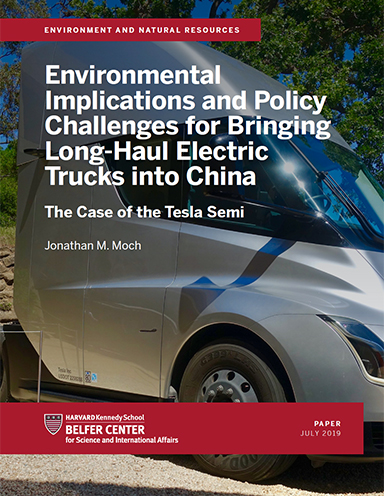Bringing Long-Haul Electric Trucks into China
This paper addresses two main questions; What are the potential impacts on carbon emissions of electric long haul trucks in China, and what are the barriers to the adoption of electric long haul trucks in China?
Executive Summary
The Tesla Semi is a battery-powered electric long haul truck currently in the prototype phase.
Since cost and technological barriers have prevented electric vehicles from making significant inroads into the market for long haul trucks, the announcement of the Tesla Semi marks one of the first major attempts to bring electrification to on-road long haul freight transport.
China, as the world’s largest carbon emitter, is an important market for truck electrification. China has a bourgeoning passenger electric vehicle market but, like the rest of the world, is reliant on heavily polluting diesel trucks for on-road freight transport.
This paper addresses two main questions:
- What are the potential impacts on carbon emissions of electric long haul trucks in China?
- What are the barriers to the adoption of electric long haul trucks in China?
Can the Tesla Semi Cut Costs and CO2 in China?
For each standard diesel truck replaced, the Tesla Semi, as announced, would be able to reduce direct CO2 emissions by up to a third over a 10 year period compared to what would have otherwise been emitted, despite a large percentage of coal in China’s electricity generation mix.
However, cost reductions depend on multiple factors including (1) diesel fuel costs, (2) the costs and utilization rates of the required charging infrastructure, and (3) whether or not the Tesla Semi is subject to a Chinese tariff on imported vehicles.
The charging infrastructure necessary to support long haul electric trucks is a major challenge to vehicle adoption, as it is with passenger electric vehicles. With only a few electric trucks on the road, the utilization rate of the charging infrastructure would be quite low and require high prices for the installers of the infrastructure to break even.
But in order to reduce electricity prices and make electric trucks more economical, a high charger utilization rate is needed, implying a large number of electric trucks already on the road.
Therefore government subsidies or direct involvement in the construction of charging infrastructure can provide an important boost to speed the adoption of electric long haul trucks by reducing costs for initial users.
What’s Related




Favorites





